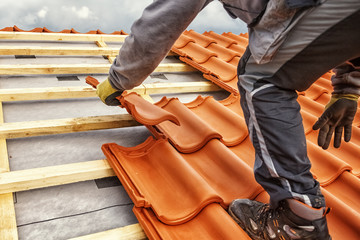Metal Roofing Installation Columbus GA is a project that requires specific tools and knowledge to get the job done right. It is also something that many homeowner insurance companies offer discounts for, saving you and them money.
Several factors go into your professional estimate, including the roof’s square footage and its pitch (angle). These determine how difficult it will be to work on and how long it will take.
When it comes to installing metal roofing, proper preparation and quality execution are critical. Inaccurate measurements, improper panel alignment, and inadequate ventilation are just a few of the issues that can arise during installation if not addressed properly. With some diligent planning and proactive problem-solving, these issues can be avoided.
To start, make sure you have all of the necessary materials. This includes the roofing panels, fasteners, sealant, flashing, and tools. Also, be sure to check with your local building codes and obtain any required permits before starting the project. Prepare the surface of the roof by removing existing shingles, if necessary. This will ensure that the roof decking is solid, and it will provide a better surface for adhesion of the new underlayment and roofing materials.
Once the roof deck is prepared, install a waterproof underlayment, as specified by the manufacturer of your chosen metal roofing material. This will protect the deck from moisture and make the roof more energy-efficient. It is also important to ensure that there is adequate ventilation in the attic space. This will prevent condensation and rot, and it will also extend the lifespan of your metal roof.
After the underlayment is installed, it’s time to put on the panels. Remember to carefully measure each panel’s dimensions before cutting them, and use a square to accurately align the edges. Once the panels are in place, they can be fastened with the appropriate screws and sealed with a durable sealant.
Using the correct fasteners and following the manufacturer’s instructions are critical to a successful installation. It is also a good idea to inspect the roof regularly for potential leaks, and make any needed repairs as soon as possible.
By avoiding common installation mistakes, such as misalignment, improper screw fastening, and insufficient sealing, you can be confident that your metal roof will last for many years to come. With regular inspections, proper maintenance, and the right care, a metal roof can last from 50-70 years. This is a significant advantage over the typical lifespan of a traditional shingle roof, which is usually only 15-20 years.
Panel Layout
A metal roof must be properly planned, laid out, and installed for its optimal performance. This includes ensuring that the panels are aligned correctly and that they overlap each other properly for effective water drainage and a neat appearance.
The first step in the panel layout process is to determine the proper sizing of each panel or trim piece. This will ensure that they fit properly and will not create gaps or other problems later on.
If the panels are being installed over a solid substrate, snap chalk lines for alignment purposes as you go along. This helps you keep track of the modularity of each panel and prevents an out-of-square condition from growing as you move from eave to ridge. For this reason, it is recommended that at least two people work together during the installation of a longer panel run. One person should be positioned at the eave and another at the ridge to ensure that each panel stays on module.
Once the panel layout is complete, it’s time to install them. The panels should be fastened to the substrate with appropriate screws and tightened securely. Ideally, each screw should be spaced evenly along the rib or ridge of the panel. This will ensure a secure and watertight seal.
If your roof has any penetrations, make sure they are located and carefully mapped out before beginning the actual roofing. This will help you avoid running into them during the installation process and will give you an idea of what adjustments are required to accommodate them. Pipe runs, for example, should be rerouted if they will land at a panel seam.
Another common mistake is installing the first panel too close to the eave. This can cause a gap that will allow rain to get under the panels and potentially leak into your home. For this reason, you should always start your panel installation at the gable end of the roof. This will prevent any wind driven rain from being forced under the panels. It is also a good idea to install a Z bar flashing on the ridge to fill in the gap caused by the overlapping metal panel seams and prevent moisture from entering your home through this area.
Underlayment
Metal roofing has a long lifespan, but only if it’s installed correctly. This means the roof needs to be inspected and prepared before installation, as well as during the process itself. It’s also important to understand the various steps involved in order to avoid common mistakes like misalignment, improper screw fastening, and inadequate ventilation. By avoiding these mistakes, you’ll ensure your roof functions optimally and stays leak-free for decades to come.
The first step is to clean the roof deck and address any issues, such as rot or water damage. This is crucial because it creates a smooth surface for the new roof to adhere to. It also prevents any moisture from getting trapped underneath the metal roof, which can cause rust. Once the roof deck is free of any problems, it’s time to roll out the underlayment. This is a protective layer that’s placed over the old shingles to keep out moisture and provide an additional barrier for your home.
After laying out the underlayment, it’s important to install furring strips if necessary. These are strips of wood that are placed horizontally across the roof and used to provide a flat, even surface for the metal panels. Without these, the panels could shift over time and cause a leak.
Once the underlayment and furring strips are in place, it’s time to start laying out the metal panels. Start at the bottom edge of the roof and work upward, overlapping each panel by 2-3 inches for proper water shedding. This also helps ensure the metal panels stay tightly fastened to the roof. It’s also a good idea to double-check the alignment of each panel, as any gaps will cause leaks and affect the overall performance of your roof.
Finally, it’s a good idea to apply a bead of sealant around the edges of each panel, as this will help prevent water from seeping in and causing rust or leaks. Once the ridge cap is aligned, secured, and sealed, your roof is protected from leaks and weather damage, ensuring a long-lasting, durable performance.
Flashing
The installation of flashing is an essential step in any metal roofing project. These thin pieces of metal help to prevent water from seeping into a structure from areas where the roof meets vertical surfaces like walls or chimneys, and where the roof’s slope changes, such as in valleys or around skylights. Properly measured and positioned flashing is also used to seal any cracks or gaps in the roof that might otherwise allow water or wind to damage the metal panels.
A number of different kinds of flashing are available, including galvanized steel for drip edge flashing, aluminum for step flashing, copper for most purposes on shingle roofs, and lead for chimney counterflashing. The correct type of flashing should be selected for the specific project based on local weather conditions, energy efficiency needs, and aesthetic preferences.
During installation, it is important to carefully follow the manufacturer’s instructions for installing and fastening flashing. The proper installation of flashing will protect the entire metal roofing system from leaks, water damage, and other problems. A qualified roofing professional will be able to provide the necessary technical assistance and guidance for ensuring proper flashing installation.
Once the underlayment is securely fastened, it’s time to add the flashing and ventilation elements that will help to protect the new metal roofing system. Gable trim is installed along the gable ends of the roof, and ridge flashing is placed at the peak of the roof to protect against wind elements.
Drip edge flashing is also added to the eaves to direct rainwater into the gutters and away from the edges of the roof. This is especially important for lean-to sheds, which often feature a single-sloped roof that can be challenging to manage for water drainage.
It’s important to check the flashing regularly for signs of wear and tear that could cause water leaks. If you notice any areas where the flashing appears to have failed, such as rust, dents, or cracks, you should take immediate action to repair them. Likewise, it’s important to keep the area clear of debris and dirt buildup that might block water flow or prevent moisture from draining properly.

